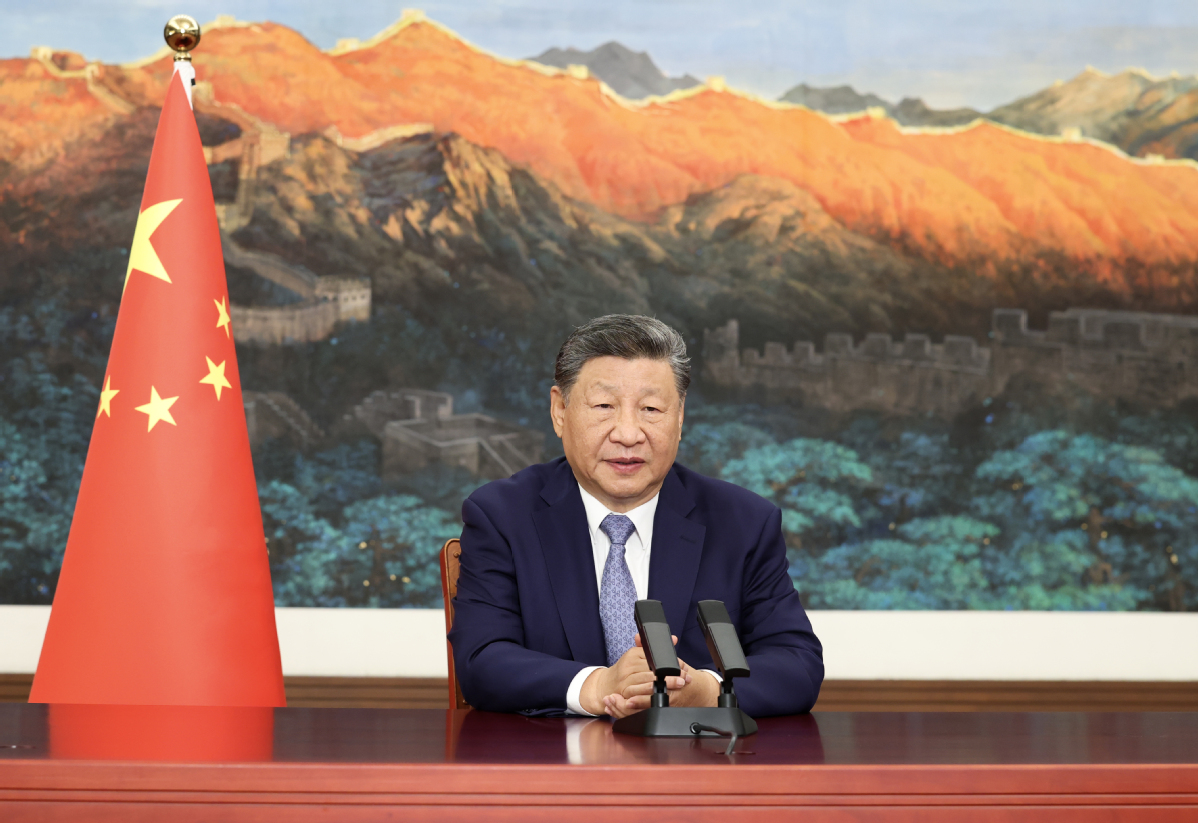Experts welcome China’s environmental efforts as president announces 2035 goals

President Xi Jinping announced China’s new climate pledges to the world on Sept 24, underscoring the country’s consistent commitment to global climate governance.
In a video address to the United Nations Climate Summit, Xi stated that by 2035, China will reduce economy-wide net greenhouse gas emissions by 7 percent to 10 percent from peak levels, while striving to do even better.
He noted that this year marks the 10th anniversary of the Paris Agreement on climate change, calling it a pivotal year for countries to submit their new Nationally Determined Contributions, or NDCs.
NDCs are at the heart of the Paris Agreement and achieving its long-term goals. They embody the efforts made by each country to reduce national emissions and adapt to the impacts of climate change.
China submitted its initial set of NDCs under the Paris Agreement in 2015, and updated the targets in 2020, vowing to peak its carbon emissions before 2030 and achieve carbon neutrality before 2060.
Outlining China’s latest NDCs targeting 2035, Xi also highlighted goals to increase the share of nonfossil fuels in total energy consumption to over 30 percent, and to expand the installed capacity of wind and solar power to more than six times the 2020 levels, striving to bring the total to 3,600 gigawatts.
China’s new NDC targets also include scaling up the total forest stock volume to over 24 billion cubic meters, ensuring new energy vehicles are the mainstream in sales of new automobiles, expanding the National Carbon Emissions Trading Market to cover major high-emission sectors, and basically establishing a climate-adaptive society.
The latest updates mark the first time that China has committed to absolute emissions reduction targets covering all economic sectors and all greenhouse gases.
In recent years, China has made tremendous efforts to deliver on its commitments to reduce emissions. The nation’s investment in clean energy reached over $625 billion in 2024, accounting for one-third of the global total and nearly doubling its 2015 funding, according to a report released at an energy industry forum in June.
Dimitri de Boer, director for China at environmental organization ClientEarth, said: “China has committed to continuing its rapid deployment of renewable energy and reducing emissions from the peak. If recent trends continue, the NDC targets will be met and exceeded.”
He added that China’s “low-cost, high-quality green technologies are the greatest breakthrough in the global fight against climate change. By accelerating innovation in renewable energy, electric vehicles, and clean tech, China is proving that sustainable growth and climate action can go hand in hand”.
In his speech on Sept 24, Xi pointed out that “green and low-carbon transition is the trend of our time”, and urged the international community to push for the formulation and delivery of NDCs.
Citing the principle of common but differentiated responsibilities, the president called on developed nations to take the lead in emission reduction and provide more financial and technological support to developing countries.
It is vital that countries strengthen international coordination in green technologies and industries to address the shortfall in green production capacity and ensure the free flow of quality green products globally, so that the benefits of green development can reach all corners of the world, he said.
Zhang Haibin, associate dean of Peking University’s School of International Studies, said that China’s NDC update once again sends a strong and clear signal that the country is an active participant, contributor and trailblazer in global climate governance.
The announcement comes as climate governance faces multiple internal and external challenges, heightening concerns and diminishing confidence in the international community, Zhang said.
He noted that in the global arena, US President Donald Trump announced the United States’ withdrawal from the Paris Agreement earlier in 2025 and adopted a series of policies opposing action on climate change, severely disrupting global governance and creating significant uncertainty.
He also pointed to adverse impacts from intensifying geopolitical conflicts and frequent international tensions.
“At this moment, confidence is incredibly important and valuable,” Zhang said.
In this context, China’s new NDC shows its active stance and firm commitment to advancing global climate governance, which will significantly boost the international community’s confidence, he said.
A statement from the National Center for Climate Change Strategy and International Cooperation said that the NDC update represents the first time China has proposed a comprehensive set of post-2030 climate targets encompassing the entire economy and aiming for net reductions across all greenhouse gases.
The statement said that by 2035, China’s net greenhouse gas emissions are projected to fall by more than 1 billion metric tons of carbon dioxide equivalent from peak levels, exceeding the combined reductions achieved by the US and the European Union in the five years after their respective peaks.
Aligning with emissions reduction pathways required to realize targets under the Paris Agreement, China’s new NDC shows unprecedented ambition and strength, and also provides guidance for industrial and technological development over the next decade, the center said.
Wang Can, director of the Joint Pollution Control and Carbon Reduction Research Center at Tsinghua University’s Institute for Carbon Neutrality, said the aggregated ambition of current NDCs is far from sufficient to meet the targets under the Paris Agreement.
Wang was speaking at a forum that saw his institute unveil the 2025 Global Carbon Neutrality Annual Progress Report.
As of the report’s publication, 48 countries had submitted their NDC updates, he noted.
According to the report, the total annual funding need of developing nations is around $470 billion, but the international climate finance they receive is only some $35 billion.
It said that only eight developed countries have currently met their 2025 funding commitments, and the withdrawal of the US from the Paris Agreement puts further pressure on addressing the overall funding gap.
“Meeting developing countries’ need for support can reduce 9 percent of the ambition gap, which is the most straightforward and predictable way to promote global carbon neutrality progress,” he said.
Contact the writers at jihaisheng@chinadaily.com.cn


